Future of SRM with SAP S/4HANA
Category: SAP S/4HANA Posted:Jun 06, 2018 By: RobertIn the close future, co-ordination with suppliers, tenders and operator purchasing will all be handled through a network of suppliers. SAP S/4HANA in coordination with the Ariba network provides considerable benefits in this regard. The launch of S/4HANA by SAP has made it clear that supply chain processes, purchasing in coordination with suppliers could also gain from this solution. This will lead to a lot of questions in the customer’s mind about the existing set of products such as the SAP supplier relationship management or SRM.
Kai Finck, the senior Vice President and head of the SAP Ariba center of excellence has said that SAP will stop mainstream maintenance for its SRM product only until the year 2025. That being said, the Finck also said that SAP S/4HANA sourcing and procurement is the future since it natively integrates with SAP S/4HANA and cloud based SAP Ariba solutions. This means that SAP is investing time in client transformation for realization of further potential benefits. The fresh solution is architected specifically to resolve issues involving purchasing department and meeting said needs.
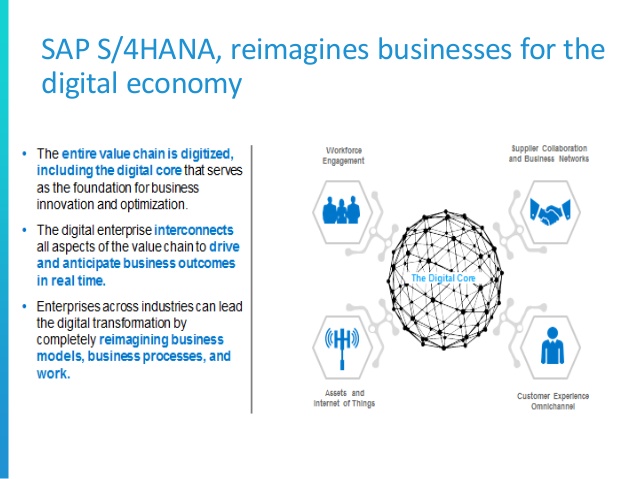
Learn SAP S/4HANA from Our Industry Experts
Benefits of SAP Ariba with SAP S/4HANA
The scenarios given below explain the advantages of SAP Ariba cloud solutions in coordination with SAP S/4HANA:
1. Doing Business with Suppliers: Suppliers and Enterprises can digitalize the process involved with source to pay on an end-to-end basis. They can also do it across various purchasing categories. For instance catalog order can automatically and electronically be forwarded to the supplier in real time.
You can make changes to the order stated above and also transfer such changes at any time with the invoices being received electronically. All specific such as the address, invoice amount VAT tax are all automatically verified.This will ensure that the process for the invoice received can be automated completely making paper documentation for invoices redundant and obsolete.
Statistics from leading organizations show that 75% of all enterprise invoices are still paper based or hard copies and 20% of such invoices are erroneous. Such automated processes will greatly reduce the effort required for accounts payable and also drastically speed up the whole process.
Surveys also predict that organizational employees should be able to handle invoices three times as much as they have done in the past. The speed is also a great factor in adopting search systems as the invoice is to be paid quicker and purchasing companies will be more efficient in their work and they will also be able to claim bonus or extra discounts.
Supplier benefits are also plenty when compared to the SAP supplier self-service portal which has been pre implemented by many SAP SRM customers. The whole service, including integration of fresh suppliers will be provided by SAP on the Ariba network.
There is a shared service center based out of Europe and other Global locations with over 500 employees. The main goal of these employees is to link with new suppliers and make them a part of the network. As of now there are round 2.3 million suppliers and SAP Ariba handles on boarding suppliers on the customer’s behalf. Initially this was under the purview of the purchasing department, but lately it has become overwhelming as a task. Since purchasing dictates the priorities SAP is leading the domain.
2. Calling for Tenders in the Cloud: Ariba network is meant for Holistic tender and award process in coordination for the supplier. A Subset of this is the process involved in handling orders and invoice processes.
Clients need to place an order for computers or computer components and services they need only. The requested suppliers will be within the cloud based Ariba network. After this they can choose the best supplier from the pool of suppliers available and sign a contract to meet their needs.
3. Catalogs and Guided Buying: Suppliers are enabled to publish their catalogues online using the Ariba network in line with the terms negotiated in the contract. This will cut down on the efforts required to maintain procurement catalogues. There is also a spot by capability which enables customers to execute Ad-Hoc purchasing. Employees here can buy items from suppliers without the requirements of a master agreement between supplier and Company.
You can ensure purchasing policy compliance with regard to Enterprises when you adopt an SAP Ariba solution and handle the complete process. The search features are brought together via guided buying within a single user friendly app. This is useful to enterprise employees within user departments as it helps in purchasing products on a flexible basis.
4. Optimizing Material Planning: Production material demands are planned by SAP S/4HANA whereas SAP Ariba platform is used to check if the supplier can deliver. How it works is SAP S/4HANA initiates a process buffering materials to the SAP Ariba network. This in turn will pass on said requirement to the suppliers.
SAP S/4HANA is advantageous because material planning does not take long time periods as it normally does for Enterprises. Instead of this, material planning is event driven and have been executed in the matter of few minutes and takes place many times a day (as opposed to several hours or days in some cases).
Market volatility has been growing exponentially in the past few years with the expectations of users and their requirements changing rapidly. It is therefore essential to progressively evolve production plans to suit customer and client need better. The key priority here is to provide supplies with their requirements in real time.
Changes in Production Planning can be updated with the suppliers in real-time using the SAP S/4HANA architecture and required adjustments can be made at an accelerated pace holding back any errors human or otherwise.
SAP S/4HANA and SAP Ariba: Cutting Costs, Optimizing Processes, Being Compliant:
Kai Finck highlights the following benefits of SAP S/4HANA Sourcing & Procurement.
1. Costs and improved efficiency: The optimization and digitization of accounting and purchasing processes across all classes help companies and their suppliers work well together. This way, establishments can work together in real time, and react malleable to demand variations.
SAP S/4HANA Sourcing & Procurement enables enterprises to track goods and cash flows at all periods, and manage working capital actively. When there’s low interest rates, enterprises have a devolved interest in paying their suppliers as early as possible through dynamic discounting to acquire additional discounts. Also enterprises can set up supply chain finance suites, which protect against supplier default risks. Such a methodology is only efficient if specific invoices are electronically accessible in the system, and also if the processes are running in real time.
2. Regulatory Compliance: Employees with an enterprise and environment which occasionally use the external catalogue for purchasing can depend on SAP S/4HANA and Ariba in conjunction for sticking to company policies.
Company policy can be varied and extensive. It can include conditions such as if the price exceeds the allocated restriction. It may also specify the employee is allowed to purchase the particular product. It may also state if an enterprise is dealing with suppliers upholding ethical principles or if the company is employing child labor or any other unethical practices. All these can be handled since account and Master Data will already have been checked and synced with independent supplier ratings along with ratings from other clients and customers.
SAP Ariba Solutions and SAP S/4HANA: The Path to Procurement Transformation
Benefits of a transformation:
- You can change the efficiency of span management and control using an end-to-end source to source send package which is integrated into the SAP S/4HANA digital code.
- You can harness enhances savings through holistic coverage for complete expense and spend types including services, indirect, capital projects, contingent labor and MRO.
- Enhanced satisfaction coupled with the adoption via best-in-class UX making it simple for employees to execute compliant and smart purchases at an accelerated pace.
- You can use the capture of early payment discounts and also prolong the day’s payable outstanding, while also improving free cash flow using a streamlined financial SCM.
- Minimize total cost of ownership (TCO) is a major factor for adopting any software suite. This is also the case for cloud based automation and to deploy solutions which can be scaled worldwide. SAP supplier relationship management or SAP SRM has been so far used to standardize and streamline procurement and sourcing functions within the Enterprise whilst taking on process automation to enhance efficiencies. SAP has taken the steps to empower and drive its customers to achieve comprehensive digital transformation in procurement using SAP S/4HANA as its digital core coupled with the holistic abilities of the SAP Ariba solution suite.
- Along with SAP Ariba solutions, SAP Field-glass solutions, SAP S/4HANA provides the most comprehensive solution Suite and the complete source to settle process.
Ever since SAP announced support for SAP SRM concludes by the year 2025 enterprises have realized that they have to alter a lot of their complicated purchasing processes. Most purchasing processes in Enterprises would have been built over a period of many years if not more. And the solution to this is a combination of SAP Ariba and SAP S/4HANA in sync with each other.
While some processes are not provided within the digital core of SAP S/4 S/4HANA other processes are provided only to a limited extent. As a result, IT managers will have to implement their processes with hybrid approaches (on-premise and cloud) in the future. Similar to a hybrid car, two different technologies work in tandem to achieve the best possible results. What this means for ground reality: shows that sub processes or the processes within processes must be mapped in the Ariba cloud or the Ariba network or in the SAP S/4 digital core.
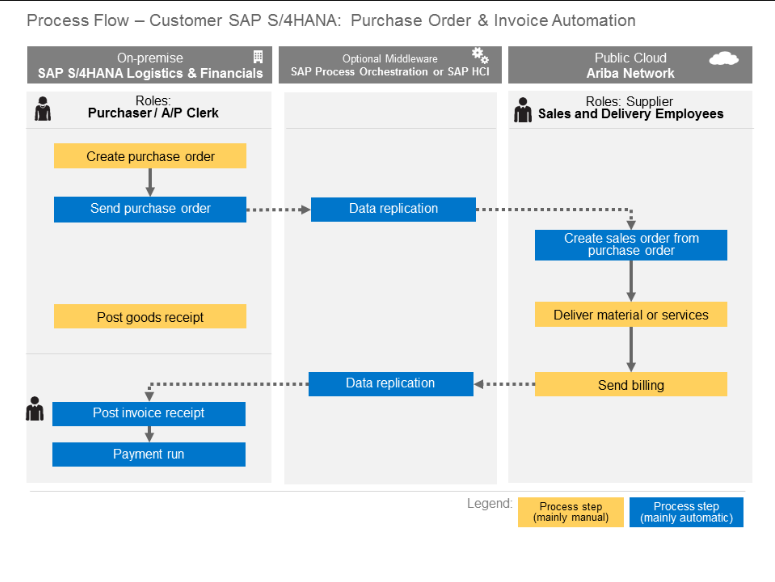
The way SAP Ariba and SAP S/4HANA complement each other can be displayed and explained in this example. Within the guided buying for instance, the customer will start with Ariba buying and entire process using Ariba catalogue. After this the Purchase requisition and purchase order are executed within SAP S/4HANA. Next Ariba again maps the cooperation with the selected vendor and all things associated with the goods and the invoice is executed in S/4HANA. Enterprises gain a lot from the advantages of course solutions S/4HANA and Ariba. S/4HANAprovides instant insights in real time along with dynamic analysis and planning. Ariba provides IMO Holistic solution for catalogue of a sales and invoice management this will include both compliance and tender management
Such integration will create a hybrid model that optimizes and maps, purchasing processes with standard SAP functions. In this manner,even complex processes can remain manageable with enterprises benefiting from the latest releases. More advantages include exception management for quality deviations, real-time monitoring and reliable traceability and decreased inspection cost.
The two sides of the Cloud – Factoring in Cloud for Transformation to SAP S/4HANA
While most Enterprises want to use S/4HANA on premise, the application is exclusively available to its customers just like it was available in the case of R3. Along with this there is complete transparency with regard to process to send data and implant operation provides great scope for independent developers. When we come to Ariba, this comes exclusively from the public cloud and promises connectivity and flexibility along with security; going by the fact that releases and patches are applied automatically. And we can say that no extra effort is needed for infrastructure maintenance.
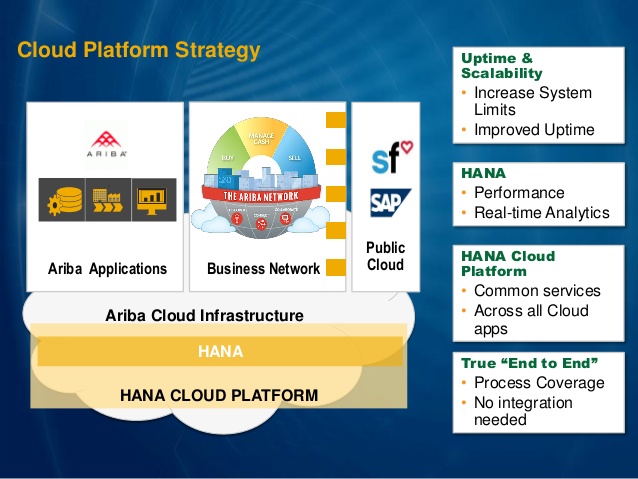
When you contrast the advantages of the cloud as a whole, it is still challenging for it managers as stated by the world’s leading survey companies such as Gartner. Concerns about data protection and security gaps, and technological requirements are also a major challenge. Mapping existing applications to the cloud is also a big deal and will take time and efficiency improvements. An SAP environment in specific is replete with in-house customization’s which can be implemented for client specific needs, and this will often require significant amounts of investment up front.
Its managers with Enterprises worldwide are also making significant efforts to return to SAP standards, making existing processes and Systems more efficient than ever before and conserve resources as much as possible. They are also looking into freeing up of resources for projects into innovation in the long run since Research and Development can increase the bottom line for any Enterprise. This will mean minimized costs and maintenance and also the probability that Enterprises can proactive lead to market volatility and changing needs.
With the S/4HANA suite you get integration with out-of-the-box scenarios which Enterprises can quickly implement without issues. Coupled with this, such solutions have great user interfaces so that it can be integrated with all systems as well.
All transformation and migration processes will need security support for new users and existing customers during the change of process. This is also true in the case of clients shifting from SAP SRM to S/4 and Ariba. A major difficulty in the hybrid procurement module is that uses most of the time, they work on different interfaces. Processes that are to be mapped in the current and future business situations and SAP S/4 driver are also dependent on the cost involved.
This is a highly complicated task for IT departments for global Enterprises as many companies can hardly master the same without the aid of external support. There are various elements to be considered for efficiently moving into the future of hybrid Technology. This means experts are needed to make it through transformation scenarios successfully and with very little issues.
Conclusion
The future of SRM is a highly potent combination of S/4HANA and SAP Ariba,which will complement one another’s software suite to ease the transition from older SRM to newer releases of S/4HANA and Ariba.
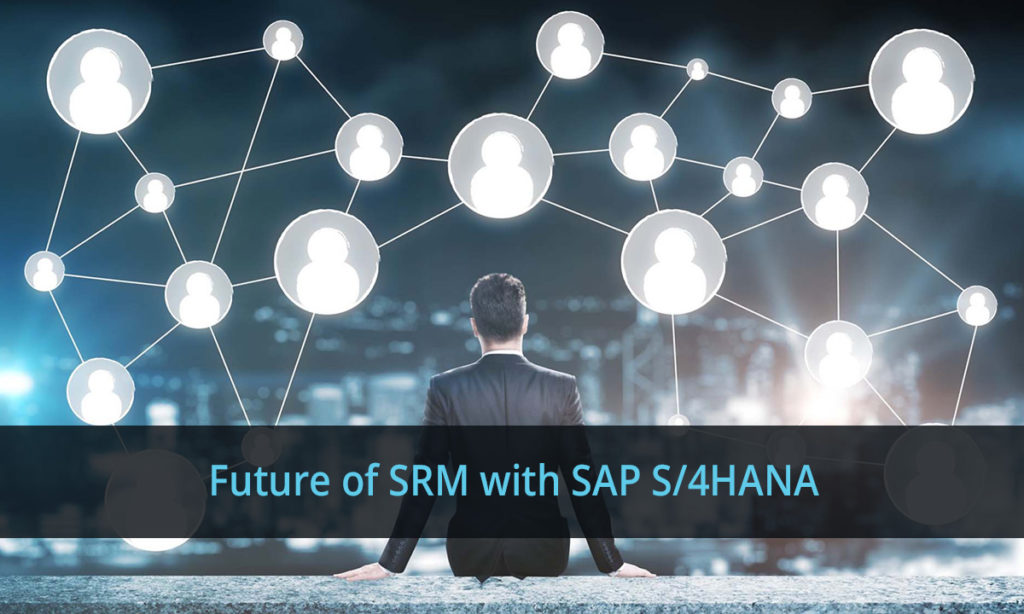

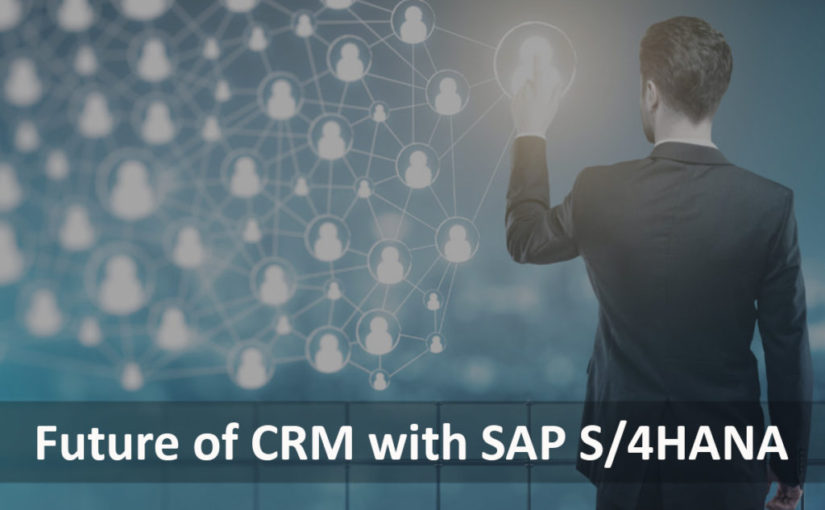

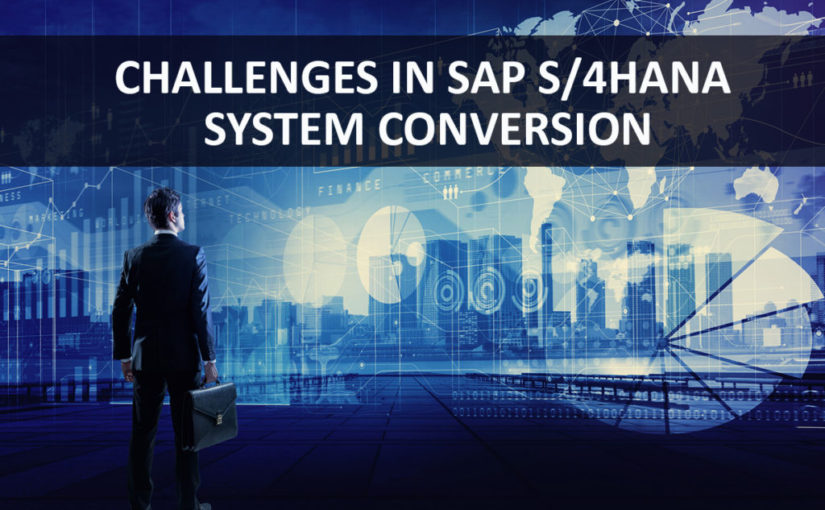

 99999999 (Toll Free)
99999999 (Toll Free)  +91 9999999
+91 9999999